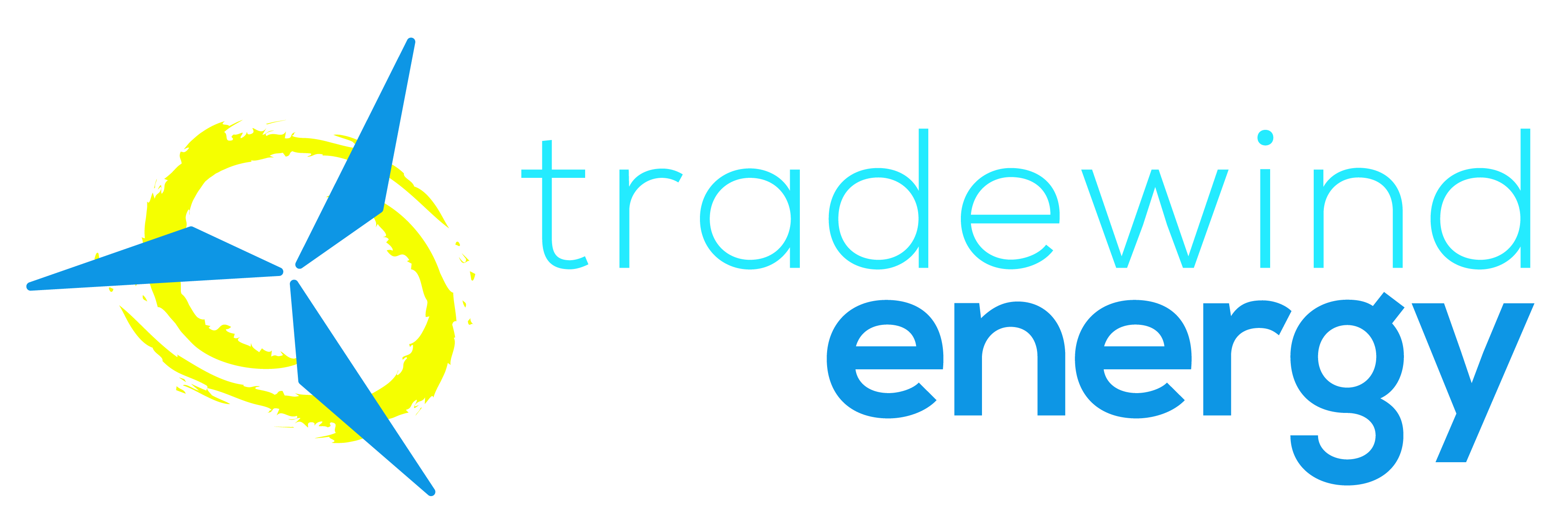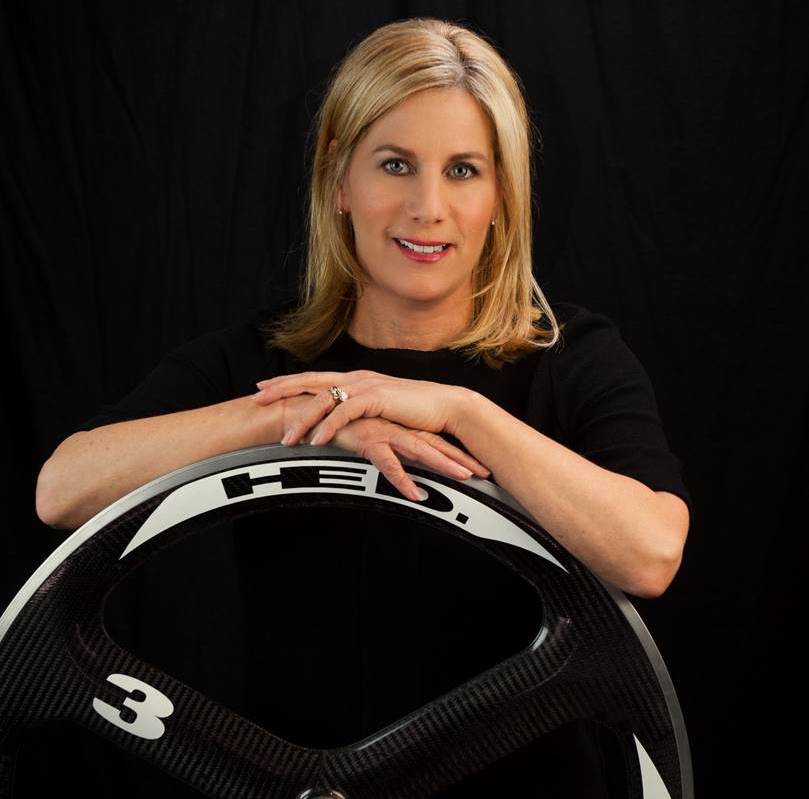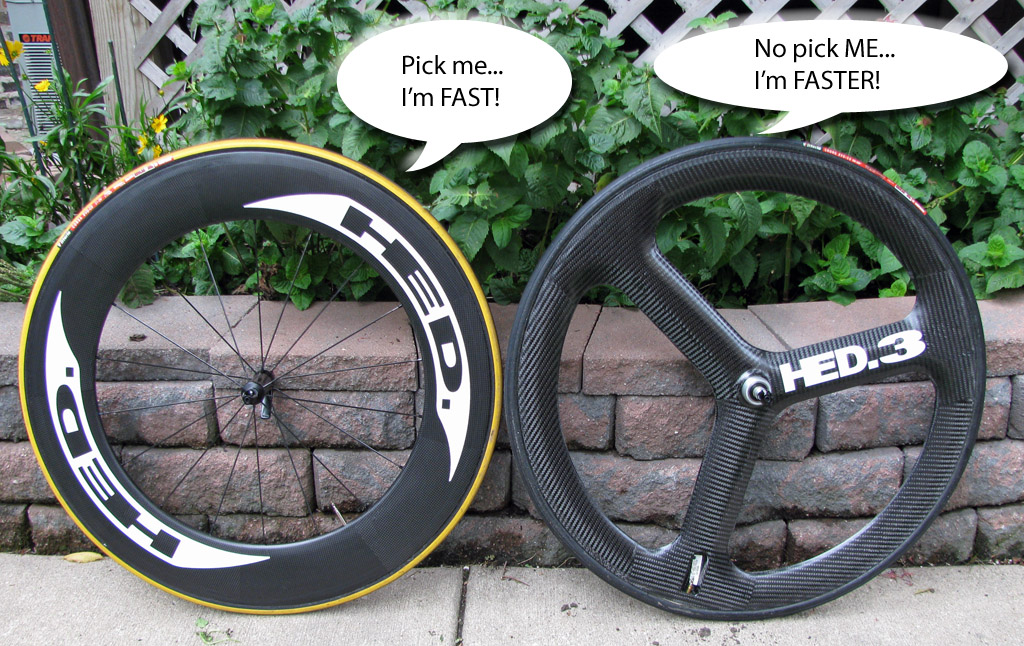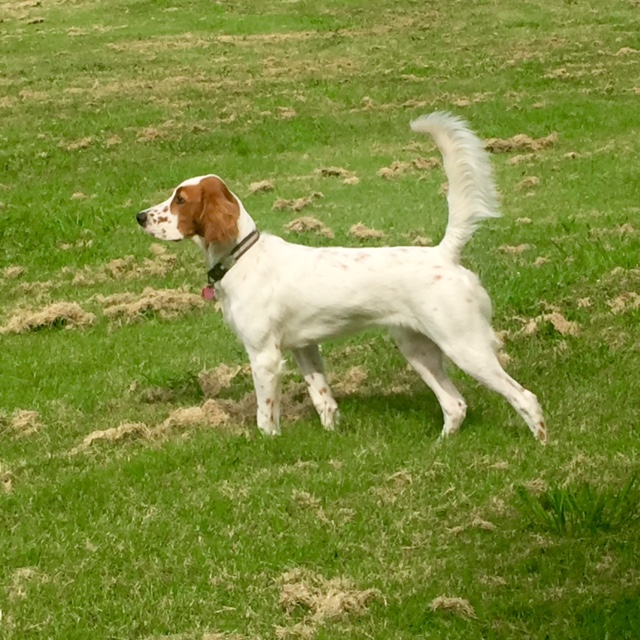Chris Froome one the uphill time trial a couple days ago at the Tour. He decided to ride a full aero setup, one with a disc wheel and tri-spoke in the front. Most of the other top ten guys decided to go for weight. I was thinking it was a good decision, watching live and that was confirmed at the finish.
I have to assume that the bike he is riding is at the UCI weight limit, so the “extra” weight of the wheels is only going to affect rotating weight. And as long as he kept his efforts consistent, the changes of speeds would be insignificant compared to the aerodynamic advantages.
The wheels make a huge difference. Much of the increase in racing speeds during my career is because of much faster wheels. I’m not sure why the other riders didn’t realize this too? Froome said – “I think that was a big part of today’s stage, selecting the right equipment,”
In the time trial, Joaquim Rodriguez (Spa) Team Katusha, stopped and did a bike change. That is a lot of time to give up when the TT was so short. You’d think that all the main contenders would have been on the same page equipment strategywise?
The fastest wheels I’ve ever ridden are tri-spokes. I raced them on the road when I was on Specialized. Then Hed took them over and they are even faster, and lighter.
Guys talk about the weight, but the H3 carbon tubular is around 1500 grams. The wheels are so fast and that weight is completely within a light road setup. For sure any time trial situation.
It’s hard to believe that Steve Hed has been gone for two years now. Time passes so quickly. I didn’t realize it had been that long until I saw an article from the Minneapolis Star Tribune about Ann Hed, Steve’s wife.
It is a pretty good article about her history and the continuation of their business. Here is a link.
Ann sponsors Gwen Jorgensen for wheels. Pat and Gwen live in MSP, so that relationship is local, which is super cool. Hopefully, Gwen has good luck in a couple weeks and can have a good race in Rio, the focus of the last couple years of competition.
Anyway, my advice is to get the best wheels you can. A “bad” bike and fast wheels is way faster than a super bike and crummy wheels. It isn’t brain surgery.








You’re brother knew this 20 years ago when he was riding the 3 spoke. I remember trying to stay on his wheel in 53×11 under full gas down the hill at Lake perry where he would sprint full on then tuck and coast all the way down it.
Completely agree about fast wheels, but should mention that Tri-spokes produce the harshest ride.
It’s funny to think about the amount riding them in Crits with like 20-23c super harsh Continentals during the 90’s.
Anyway agree they are fast.
There was a rumor for a while that tri spokes were actually slower on certain bikes and that drove them to the edge again. They are harsh as hell but for a TT a full disc with a trispoke up front is the shit. A deep front wheel is next best … though in cross winds the game kind of changes!
Every piece of research I have ever seen shows that aero trumps weight until you are in a LONG mountain climb and over 8%. But as you point out, if the bikes are already at the UCI min and you don’t have changes of speed aero still wins. At tour speeds it is a no brainer – this is one example where Brailsford incremental improvement holds true. Guys are going by gut and feel rather than science. Like Tony Martin using clinchers in flat time trials – just faster – but it goes against tradition so he is like a lone wolf.
I used to never believe it but I have one TT where I put a disc cover on the rear and borrowed a 60mm front … all cheap stuff. The numbers don’t lie … it was faster … significantly faster. Fast frames depend on so many other variables (position, shit hanging off them, pedaling dynamics) … faster wheels are just hanging out there in the wind
I have always wondered why the don’t seem to use deeper carbon rims in the pros since aero seems to be better than weight in most situations. It seems that amateurs in the US use more aero wheels than the pros in Europe.
I don’t know if you’ve ridden any of the new tri spokes on the market, like the GT3 and H3+, but they ride pretty similarly to a spoked wheel these days. Gone are the days of 15mm internal bead hook measurements. The new wheels are 21mm internal for a way better ride.
I still have a Specialized Tri-Spoke, with an Aluminum brake track.
I did some experiments on my own with all sorts of wheels (I spent all my money on bike stuff back then, and at the time it was all about wheels). The TriSpokes were by far the fastest of the wheels I tested (Zipp 440, 340, Spinergy Rev-X, old Ventos, Campy Record Crono box, prototype disk wheel with straight angled sides). However they took longer to get up to speed. I used the TriSpokes when doing really fast races (P123 as a 3) and the 340s when doing the slower, more jumpy Cat 3 races. In road races I knew I was going to get dropped and I also knew I descended better than anything else so I optimized my bike for descents – box front wheel (so full speed in any wind conditions) with either a TriSpoke or a 440 at the back.
My favorite TriSpoke ride was in lieu of a canceled crit in Coconut Grove, FL (or thereabouts). We flew down to visit a teammate’s parents especially to do the crit. It was a big deal, George Hincapie was supposed to be there after the Tour, so maybe it was 1999 after Lance’s first Tour? Hincapie was from around here and I grew up getting beat by him all the time. The ironically named Hurricane George hit that weekend so everything was cancelled. With winds steady at 50 mph and gusting up to 80 mph (below the peak 125 mph expected) I thought it would be our last time to go for a ride before we really had to hunker down. I only brought the TriSpokes (because a P123 race qualified for me as “fast and steady” i.e. single file all the time). So that’s what I rode. Three of us rode out into the wind, turned around when we got to some Jersey barriers strung across the road, and absolutely flew back. At first we experimented by coasting, sitting up, at about 20-22 mph. Once under way we were soft pedaling at 30-35 mph, in the 14 or so. Over the Key Biscayne bridge I sprinted. Once on the flat bit after the bridge I kept my speed up. It was all I could do to turn the pedals fast enough – I did about 60 mph for about a minute, passing a car that was next to us on the highway. I wish I had a bigger big ring that day. Also it would have been insane to see on Strava or MapMyRide or similar.
And I still have the wheels, along with the clincher front TriSpoke that I used in training.
There’s a good reason for amateurs to use deeper rims. At low yaw angles, there is minimal benefit to going to a deeper rim once a minimum depth is achieved. The big benefit from the deeper rims comes at high yaw. Pro’s are fast enough that they rarely see these high angles. Amateurs, being slower, are more likely to see higher yaw and so benefit from the deeper rims. It’s why a trispoke might be the best choice for a Chris Froome or Steve Tilford, but not for someone slower like me.
New flash for Gwen: You won’t want to be in the athletes village:
http://www.smh.com.au/sport/olympics/rio-2016/rio-olympics-2016-athletes-village-unliveable-20160724-gqcqxy.html
Kris still does. Races a tri-spoke at Bazaar RR each year. Super fast after the turn around when he catches that south wind.